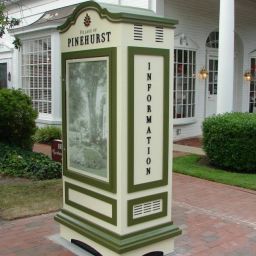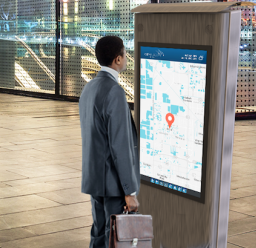 Eight Steps to Successful Digital Signage Content
Eight Steps to Successful Digital Signage Content
Every medium used to convey information needs engaging content, Digital Signage is no different.From the words used to the font chosen, interactive digital signage has certain nuances and size constrictions that need be considered in order to successfully reach the target audience. For reference, we’ve complied the eight most important things to remember when creating and managing Digital Signage content.
- Keep Text Simple and Clear:
- Consider using black and white text for optimal legibility and include color through images and headlines. It’s best to stick with dark text on a light background or visa versa to ensure plenty of contrast on the screen.
- It’s always best to use sans-serif fonts on digital signage displays. There is a wide variety of fonts in this family and bold or italic text can be used to highlight important phrases.
- Make sure text is legible up close and from a distance. We recommend one inch size in text for every 10 feet of distance from the screen.
- Avoid all caps. It’s hard to read and can come across as aggressive.
- Timing is Everything: When using a slideshow type screen with scrolling images, slow down the timing in order to allow the audience to consume the information. Often the screen frequency is too fast, leaving the viewer frustrated and unable to digest all of the content. However, leaving the screen for too long can be equally damaging to the message. We recommend to keep each item/screen play time under seven seconds.
- Use Attention Grabbing Visuals:
- Remember that the screen is silent so text and images must be dynamic.
- If brand imagery is being used, keep brand icon usage consistent with usage in other media.
- Keep brand colors running throughout the screens to keep brand recognition throughout the presentation.
- Place a Call to Action on Every Screen: Start a call to action with a verb, keep the verb and subject close together and embed it into each screen being used (e.g. Get Yours Today, Get Started Now, Try it For Free, etc.)
- Keep Motion to a Minimum: Use motion sparingly. Too much motion can have a detrimental effect on the message by distracting the viewer.
- When using motion, keep a logo or text box static as a grounding point on the screen.
- Motion on the periphery is more subtle than motion in the middle of the line of sight.
- The most important features should be static.
- Content Variety is Critical: Digital signage content should vary greatly based on the location and intended use. Below is a comprehensive list of ways we’ve seen digital signage successfully utilized in the past:
Announcements Daily Specials Sports Scores Stock Updates Date & Time Loyalty Programs Business Hours Honors & Awards Tickers Company News Visitor Welcome Letters Health Tips Menus Event Schedules Speaker Biographies FAQs Social Media Statistics & Charts Contents Donor Thanks News Headlines Event Promotions Staff Profiles HR Information Videos RSS Feeds Press Releases Holiday Hours Advertisements Polls & Surveys Volunteer Drives Auditions “How To” Instructions Shuttle Maps & Times
Wayfinding Information Meeting Time & News PowerPoint Presentations Websites & Landing Pages Audio, Video & Television Feeds Weather & Traffic Alerts - Content is King: Is the content entertaining, informing and educational? Consider using rhyme and alliteration to allow for quicker retention and memorization. Most people can remember up to three items at any given time. Keep the message clear and concise; keep the screen views long enough so that the message can be read and absorbed.
- Should Content Be Managed Remotely or Manually: Installing signage with remote management capabilities is one of the best ways to update content. Many digital signage companies have software that can include new social components for Digg, Instagram, Google Calendar, Google Drive, Picasa, Google Plus, YouTube, Facebook and Twitter. In addition, some Digital Signage companies have added new integration features for web browsers and expanded support for node.js and JSON for custom insertion and custom component integration.
Still have questions about creating and managing Digital Signage content? Reach out to our team of experienced individuals to learn more.

 Eight Steps to Successful Digital Signage Content
Eight Steps to Successful Digital Signage Content

